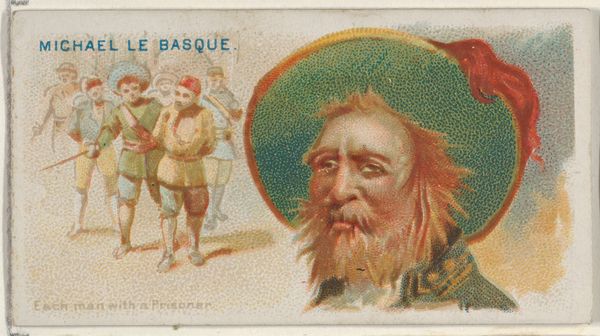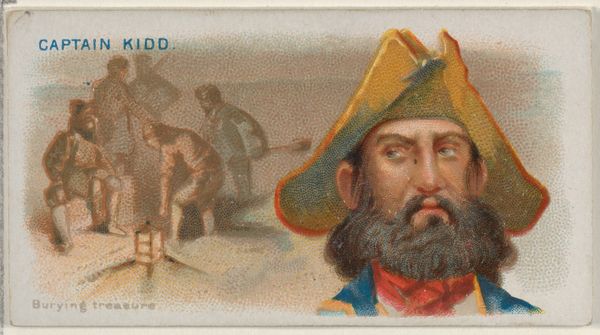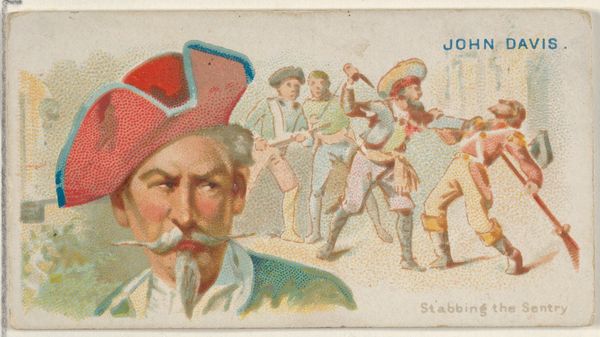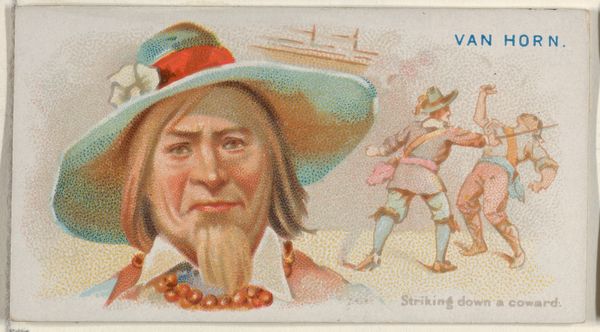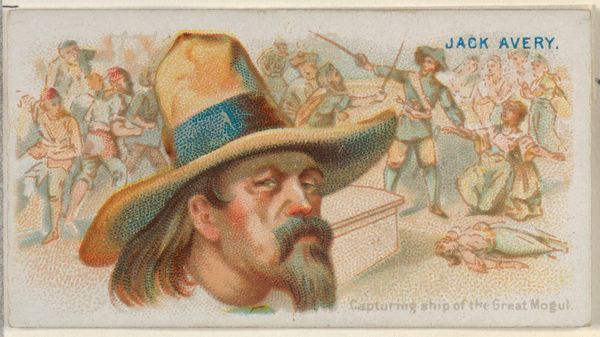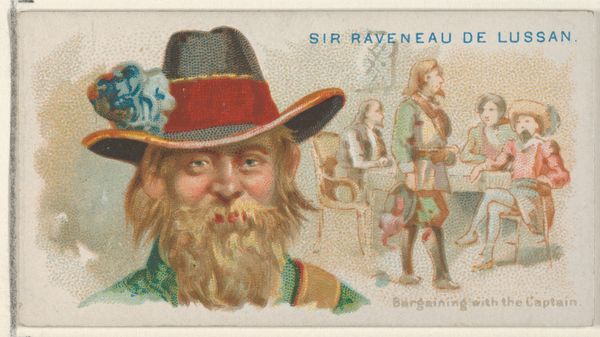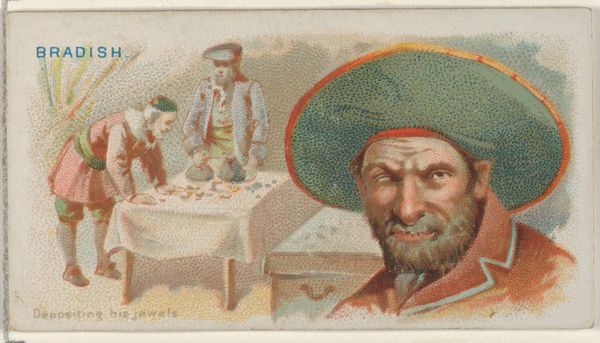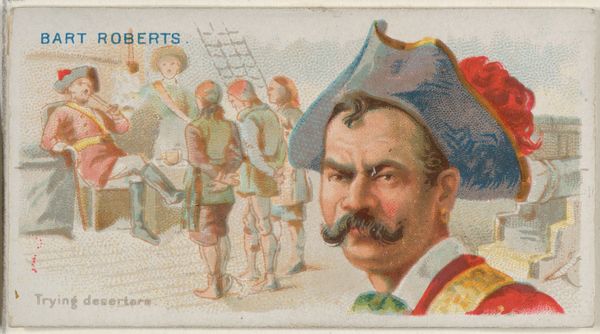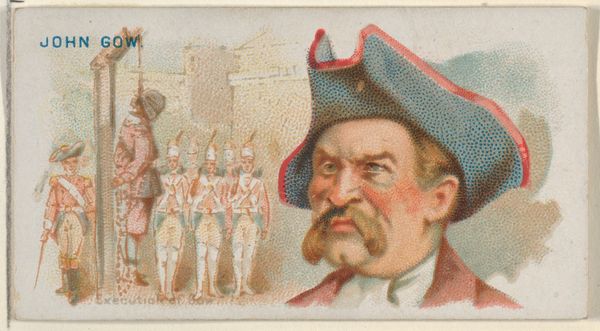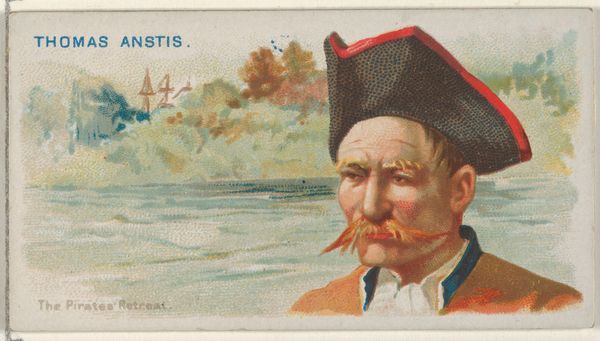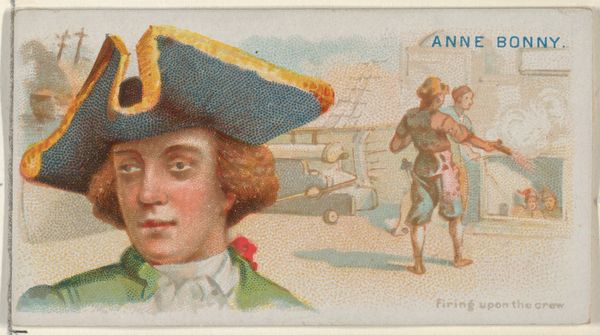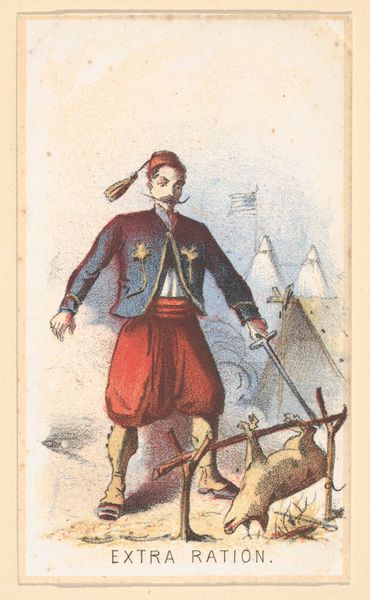
Francis Lolonois, Death of Lolonois, from the Pirates of the Spanish Main series (N19) for Allen & Ginter Cigarettes 1886 - 1891
0:00
0:00
drawing, coloured-pencil, print
#
drawing
#
coloured-pencil
#
narrative-art
# print
#
coloured pencil
#
men
#
history-painting
Dimensions: Sheet: 1 1/2 x 2 3/4 in. (3.8 x 7 cm)
Copyright: Public Domain
Editor: Here we have "Francis Lolonois, Death of Lolonois," a print created by Allen & Ginter sometime between 1886 and 1891. It's rather striking. There's this very detailed portrait of a man with a large beard in a wide hat on one side, and on the other side, what appears to be the man's demise at the hands of indigenous people. How do you read the imagery presented here? Curator: It's crucial to understand these Allen & Ginter cards as reflections of their time, deeply embedded in a narrative of colonial expansion and anxieties. The "Pirates of the Spanish Main" series romanticized figures like Francis Lolonois, effectively turning historical brutality into entertainment. Consider how this card functions as a piece of propaganda, shaping public perception of pirates and Indigenous populations. Editor: Propaganda? That's a strong word. How so? Curator: The composition reinforces a power dynamic. We see a distinguished, almost regal, portrait juxtaposed with a chaotic scene of his death. This highlights the perceived 'civilized' European figure versus the 'savage' native population. How does the color palette influence this contrast, in your opinion? Editor: I see your point. The portrait is rendered in richer, more detailed colors, while the death scene uses softer, almost washed-out tones, perhaps suggesting a distant or less significant event. I never thought of a baseball-style card as carrying that kind of message! Curator: Exactly! And that’s the power of visual culture. Even something seemingly innocuous like a collectible card reinforces dominant ideologies about history and cultural hierarchies. These images helped build and perpetuate ideas about the 'Wild West' and the 'Age of Exploration.' They shaped, and continue to shape, how we understand those historical periods. What’s your biggest take away? Editor: That what appears to be just a picture can carry loaded historical and social meanings! This makes me want to reconsider everything I thought I knew about these popular images. Curator: Precisely! Critically examining the intent and impact of these images helps us understand their historical role and the biases they perpetuated.
Comments
No comments
Be the first to comment and join the conversation on the ultimate creative platform.
